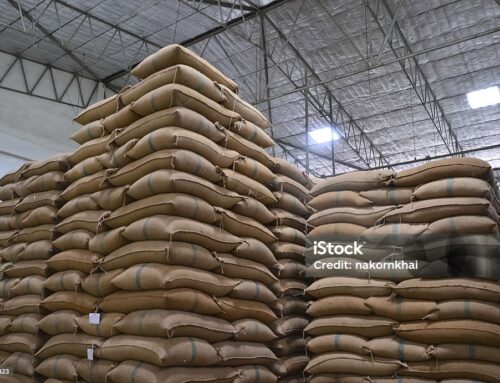Introduction
Brent Crude is one of the most significant and widely used crude oil benchmarks in the world. It plays a vital role in determining global oil prices and influences the economy of several countries. This blog post will explore Brent Crude’s history, its chemical identity, the drilling process, where it is found, its global applications, trading platforms, and its overall importance in the global market.
1. The History of Brent Crude
Brent Crude takes its name from the Brent oilfield, located in the North Sea between the United Kingdom and Norway. Discovered in 1971 by Shell UK, this field became one of the most productive oil fields in the North Sea. The name “Brent” was derived from a Shell naming convention that used bird species, in this case, the Brent Goose.
Initially, the crude extracted from the Brent field was primarily used in the European market. Over time, however, its significance grew, and it became an essential pricing benchmark for oil transactions worldwide. In the 1980s, the Brent crude price index was established as a primary reference for oil trading, alongside other benchmarks such as West Texas Intermediate (WTI) and Dubai Crude.
Over the years, production in the Brent oilfield has declined. However, the Brent benchmark has been maintained by incorporating crude from other North Sea fields, such as Forties, Oseberg, and Ekofisk.
2. The Chemical Identity of Brent Crude
Brent Crude is classified as light, sweet crude oil. Its chemical properties make it highly desirable for refining into gasoline and diesel. Here are some key characteristics:
- API Gravity: Around 38-40 degrees, making it a light crude oil.
- Sulfur Content: Approximately 0.37%, which classifies it as a sweet crude oil.
- Viscosity: Low viscosity due to its light nature, making it easier to refine.
- Hydrocarbon Composition: Mainly composed of alkanes, cycloalkanes, and aromatic hydrocarbons.
Because of its low sulfur content and lightness, Brent Crude is easier to refine and is in high demand worldwide.
3. The Drilling Process of Brent Crude
The process of extracting Brent Crude involves multiple stages, from exploration to production:
a) Exploration and Reservoir Identification
The process begins with geological surveys and seismic studies to identify potential oil reserves beneath the seabed. Advanced 3D seismic imaging is used to map out reservoirs accurately.
b) Drilling and Extraction
Once an oil-rich area is identified, offshore drilling platforms are set up. The drilling process follows these steps:
- A drill bit is used to penetrate the seabed and reach oil-bearing rock formations.
- A casing is inserted into the well to prevent collapse and contamination.
- The oil is extracted using high-pressure drilling techniques, including hydraulic fracturing and enhanced oil recovery (EOR).
c) Processing and Transportation
Once extracted, Brent Crude is transported via pipelines and oil tankers to refineries for further processing.
4. Where is Brent Crude Found?
Although named after the Brent field, today’s Brent Crude benchmark is a blend of oil from multiple North Sea fields, including:
- Brent (UK)
- Forties (UK)
- Oseberg (Norway)
- Ekofisk (Norway)
These fields are primarily located in the UK and Norwegian sectors of the North Sea. Over time, as production from the original Brent field has declined, new sources have been added to maintain the benchmark’s relevance.
5. Where is Brent Crude Used?
Brent Crude is widely used across the globe for various purposes, including:
- Refining into Fuel: It is a primary feedstock for gasoline, diesel, and jet fuel production.
- Industrial Applications: Used in petrochemicals, lubricants, and other oil-based products.
- Energy Generation: Some power plants use refined oil derivatives from Brent Crude.
- International Trade: Brent Crude pricing serves as a reference for two-thirds of the world’s crude oil trade.
6. Where is Brent Crude Traded?
Brent Crude is primarily traded on international commodity exchanges, including:
- Intercontinental Exchange (ICE): Brent Crude futures are one of the most actively traded contracts.
- London-based Brent Market: A crucial hub for physical crude oil transactions.
- New York Mercantile Exchange (NYMEX): Though WTI is the primary benchmark in the U.S., Brent Crude is also traded here.
- Singapore and Tokyo Exchanges: Brent Crude is widely used in Asia for pricing oil imports.
7. The Importance of Brent Crude in the Global Economy
Brent Crude plays an essential role in the global economy for the following reasons:
a) Benchmark Pricing for Oil
Brent Crude serves as the reference price for nearly two-thirds of internationally traded crude oil. Countries and companies use Brent prices to determine the cost of oil imports and exports.
b) Influence on Fuel Prices
Changes in Brent Crude prices directly impact gasoline, diesel, and jet fuel costs worldwide. Consumers and businesses are affected by fluctuations in Brent Crude prices.
c) Indicator of Economic Stability
Oil prices, including Brent Crude, serve as an economic barometer. Rising oil prices may indicate geopolitical instability or supply disruptions while falling prices suggest economic slowdowns or increased production.
d) Geopolitical Impact
Since Brent Crude is sourced from the North Sea, it is less affected by political instability in the Middle East. However, its price still reacts to global events, including OPEC decisions, trade policies, and conflicts.
e) Environmental and Sustainability Considerations
With growing concerns about climate change, the oil industry is under pressure to transition toward cleaner energy sources. However, Brent Crude remains crucial in the transition period as economies balance fossil fuel dependency with renewable energy investments.
Conclusion
Brent Crude remains one of the most influential crude oil benchmarks in the world. With its history rooted in the North Sea, its low-sulfur and light nature make it highly desirable for refining into fuels. It is extensively traded on global exchanges and serves as the pricing reference for oil markets worldwide. As the world transitions towards sustainable energy sources, Brent Crude will continue to play a critical role in global economic stability and energy security. Understanding its significance helps businesses, investors, and policymakers make informed decisions in the ever-evolving energy landscape.




